Carpal Tunnel Syndrome
Carpal tunnel syndrome is an extremely common wrist ailment. You may have discomfort or damage if swelling presses on your medial nerve in the carpal tunnel of your wrist.
Carpal tunnel syndrome manifests as wrist pain, tingling, weakness, and numbness. A physician or other health care provider will suggest treatments including physical therapy, surgery, or splinting.
What is Carpal Tunnel Syndrome?
- Carpal tunnel syndrome is a condition characterized by swelling in the wrist that compresses the median nerve. It might cause numbness, weakness, or tingling. Typically, the cause is trauma, repetitive motions, or underlying disease.
- There is a gap in your wrist bones called the carpal tunnel. It functions similarly to a tunnel road through a hillside, but instead of creating space for automobiles to drive through, it serves as a channel in your bones that allows tendons, ligaments, and nerves to travel through to reach your hand.
The condition known as carpal tunnel syndrome is brought on by irritation or increased pressure on the median nerve, which passes through your carpal tunnel. - The majority of your fingers and hands have feeling, and the median nerve facilitates forearm movement. It can give your hand and wrist extra or inaccurate sensations if it is broken or forced up against the walls of your carpal tunnel.
- Consult a doctor if you’re feeling pain, tingling, or numbness in your hands or wrists. Treatment for carpal tunnel syndrome normally works effectively, but if you wait too long to get help, it can permanently damage your median nerve.
Relevant Anatomy
- About an inch wide, the carpal tunnel is a tiny opening in the wrist, little wrist bones known as carpal bones construct the tunnel’s floor and walls. The flexor tendons and median nerve, which bend the thumb and fingers, are located in the carpal tunnel. The transverse carpal ligament is a strong band of connective tissue that forms the tunnel’s roof. The carpal tunnel cannot expand or grow in size because these boundaries are so inflexible.
- One of the major nerves in the hand is the median nerve. It begins as a collection of nerve roots in the neck, which unite to produce one nerve in the arm. The median nerve descends the upper arm, crosses the elbow, enters the forearm, and then travels to the hand and fingers via the carpal tunnel at the wrist. Along the route, especially when it gets to the palm, it splits into multiple smaller nerves.
- The muscles surrounding the thumb base are likewise under the control of the median nerve.
Along with the nerve, the nine tendons responsible for bending the fingers and thumb pass through the carpal tunnel. Due to their ability to flex the thumb and fingers, these tendons are known as flexor tendons. - Carpal tunnel syndrome is characterized by a narrowing of the tunnel or swelling of the synovium, the tissue around the flexor tendons, which puts pressure on the median nerve and reduces its blood supply.
The hand may experience discomfort, tingling, numbness, and weakness as a result of this excessive pressure on the nerve.
Causes of Carpal Tunnel Syndrome
Increased pressure within the carpal tunnel compresses the median nerve as it passes through the tunnel and across the wrist into the palm, resulting in carpal tunnel syndrome. Carpal tunnel syndrome can be brought on by different sources rather than just one, including:
- Repetitive hand motions: The tendons in the carpal tunnel can become irritated by actions such as prolonged gripping, pinching, or forceful wrist flexion or extension, which can result in median nerve compression and edema. Typing, working in an assembly line, and playing specific musical instruments are a few examples.
- Underlying medical conditions: Several illnesses, including obesity, diabetes, and rheumatoid arthritis, can cause the body to retain more fluid and become more inflamed, putting pressure on the median nerve.
- Pregnancy: Changes in hormones can lead to fluid retention, which raises the risk of carpal tunnel syndrome.
- Hand trauma: Breaks, sprains, and other wrist trauma can harm the tendons or ligaments in the carpal tunnel, causing the median nerve to enlarge and become compressed.
- Hereditary factors: This is probably a crucial element. Some people may naturally have smaller carpal tunnels, or there may be structural variations that alter the nerve’s volume. These characteristics can run in families.
- Additional factors: Certain drugs, menopause-related fluid retention, and obesity have all been related to a higher incidence of carpal tunnel syndrome.
Symptoms of Carpal Tunnel Syndrome
Carpal tunnel syndrome is characterized by numbness, tingling, and weakness in the hands and wrists. It occurs when the median nerve, which runs through the wrist, is pinched or crushed. The median nerve supplies sensory nerves to the thumb, index finger, middle finger, and portion of the ring finger. It also regulates the muscles that provide you with thumb movement. Carpal tunnel syndrome manifests as a variety of symptoms:
- Thumb, index finger, middle finger, and half of the ring finger numbness, tingling, or burning discomfort.
- Discomfort that could travel up the forearm.
- Hand weakness that makes it challenging to hold objects.
- Pinching the thumb and fingers together is difficult.
Frequently, symptoms start slowly and get worse at night. Shaking your hand may help ease any numbness or tingling you may have experienced when you woke up. As the illness gets worse, symptoms could also happen throughout the day.
Usually, carpal tunnel syndrome takes time to appear. At first, you might just have mild symptoms, but they could eventually develop worse.
Risk Factors of Carpal Tunnel Syndrome
Carpal tunnel syndrome can affect everyone, but certain individuals are more susceptible to it than others.
- These individuals include those who perform repetitive hand and wrist motions at work (such as using a computer or swinging a hammer).
- Those who operate vibrating power instruments (such as jackhammers or drills).
- Compared to men, women are more prone to experience carpal tunnel syndrome. This is likely due to hormonal changes, such as those that occur during pregnancy and menopause.
- Adults who are above 40.
- Those with carpal tunnel syndrome in their biological family (which can run in families and be inherited).
You may also be more susceptible to carpal tunnel syndrome if you have any of the following underlying medical conditions:
- Rheumatoid arthritis/ Gout: it is an inflammatory condition that inflames joints, particularly the wrists.
- Diabetes: Diabetes can harm nerves in the hands and wrists as well as other parts of the body.
- Obesity: Being overweight can put more pressure on the wrist’s median nerve.
- Pregnancy: Carpal tunnel syndrome and wrist edema can result from fluid retention during pregnancy.
- Hypothyroidism: Carpal tunnel syndrome and fluid retention might result from an underactive thyroid gland.
Complications of Carpal Tunnel Syndrome
- Carpal tunnel syndrome can permanently injure your wrist if a medical professional does not identify and treat it properly. In particular, the increased pressure may harm your medial nerve, which could make it difficult or impossible for you to move, feel, or use your hand.
- See a doctor as soon as you have any changes in your ability to feel or use your hands and wrists, including carpal tunnel syndrome.
Diagnosis of Carpal Tunnel Syndrome
Doctors use a variety of techniques to diagnose carpal tunnel syndrome:
Medical background and physical examination:
The first thing your doctor will ask you to tell them about is how bad your symptoms were when they first started, and what activities aggravate them. Additionally, they will examine your hands and wrists physically, which could involve the following test:
- Tinel’s sign: Your wrist’s median nerve will be tapped by your physician. Carpal tunnel syndrome can appear as tingling or pain that travels down your fingers.
- Phalen’s test: You will be asked to bend your wrist downward for sixty seconds by your doctor. During this period, if you feel tingling or numbness in your fingers, it may indicate carpal tunnel syndrome.
- Monitoring the presence of weakness and sensation: Your thumb, index finger, middle finger, and half of your ring finger will all be felt for strength and sensation by your doctor.
Electrodiagnostic tests:
Although the physical examinations mentioned above provide some indications, electrodiagnostic testing is the most reliable method of diagnosing carpal tunnel syndrome. Your muscles and nerves’ electrical activity is measured throughout these tests. There are mostly two kinds:
- EMG, or electromyography: To assess the electrical activity of your hand muscles, a small needle electrode is placed. This can assist in identifying the presence of nerve injury.
- Nerve Conduction Study (NCS): This involves applying electrodes to your skin to gauge the strength and speed of signals passing through your median nerve. Carpal tunnel syndrome may be indicated by sluggish or sluggish signals.
Diagnostic imaging tests (MRI, ultrasound, and X-ray):
- Although X-rays are not commonly used to diagnose carpal tunnel syndrome, they can be useful in ruling out other possible explanations of your symptoms, such as arthritis or a fracture. Although they are not always required, MRIs and ultrasounds can also be utilized in some situations.
It’s crucial to remember that a medical practitioner should make the diagnosis. To diagnose carpal tunnel syndrome and suggest the best course of treatment, they will evaluate your symptoms, exam findings, and test results.
Differential Diagnosis of Carpal Tunnel Syndrome
To properly treat carpal tunnel syndrome (CTS), a comprehensive differential diagnosis is essential. This is because CTS can resemble the symptoms of other illnesses. When diagnosing carpal tunnel syndrome, a physician may take into account the following conditions:
Conditions with a median nerve entrapment:
- Pronator Teres Syndrome: This disorder compresses the forearm’s median nerve, resulting in tingling and numbness in the thumb, index, and middle fingers.
- Anterior Interosseous Nerve Syndrome: This condition affects the median nerve branch, causing weakness and trouble holding objects.
Disorders of the cervical spine:
- Cervical radiculopathy: This is a condition in which pain and numbness from a pinched nerve in the neck go down the arm and into the hand, resembling CTS symptoms in the thumb and fingers.
- Cervical spondylosis: Similar to CTS in terms of pain and weakness, degeneration of the cervical spine can compress nerves.
Additional conditions affecting the hands and wrists:
- Tenosynovitis: An inflammation of the wrist tendons can provide discomfort and soreness, which is occasionally misdiagnosed as CTS.
- De Quervain’s Tenosynovitis: This condition primarily affects the tendons that are closest to the thumb’s base, resulting in pain and trouble gripping.
- Thumb carpometacarpal arthritis: This arthritis of the thumb base can produce pain and stiffness that are different from the symptoms of CTS.
Neurological disorders:
- Diabetic neuropathy: Diabetes-related nerve degeneration can resemble CTS in causing numbness, tingling, and pain in the hands and feet.
- Multiple sclerosis: This autoimmune condition can cause symptoms resembling those of CTS by affecting different areas of the nerve system, including the hands.
- Guillain-Barre syndrome: This rare autoimmune condition can produce tingling and weakness all over the body, including the hands.
Vascular Conditions
- Thoracic outlet syndrome: Similar to CTS, this condition is characterized by pain, numbness, and weakness in the arm and hand due to compression of blood vessels and nerves in the upper chest.
Recall that to ensure appropriate treatment, a doctor should conduct a differential diagnosis. To differentiate CTS from other illnesses, they will take into account your medical history, symptoms, physical exam results, and maybe electrodiagnostic tests.
Treatment of Carpal Tunnel Syndrome (CTS)
Treatment and management of carpal tunnel syndrome (CTS) primarily aim to relieve pressure on the median nerve and reduce inflammation. Typically, the process starts conservatively and progresses to more invasive techniques as needed. Following is a list of the most widely used treatments:
Non-surgical Management:
- Wrist splinting: By keeping your wrist in a neutral position, a splint, especially at night, helps to relieve pressure on the median nerve. This is frequently the first line of protection.
- Activity modification: To reduce the amount of strain on your wrists, an occupational therapist or doctor may suggest making adjustments to your routine. This might involve switching up your instruments, pausing frequently, or correcting your posture.
- Anti-inflammatory drugs: Nonsteroidal anti-inflammatory medications (NSAIDs) sold over the counter, such as ibuprofen or naproxen, can help lessen the discomfort and inflammation brought on by CTS.
- Physical therapy: By teaching you exercises to strengthen and increase the flexibility of the muscles surrounding your wrist, a physical therapist can help you improve wrist function and possibly lessen pressure on the nerve.
- Corticosteroid injections: Cortisone injections directly into the carpal tunnel are an effective way to relieve pain and reduce inflammation. However, because there may be adverse effects with prolonged use, these injections are usually only administered frequently.
Surgical Management:
Carpal tunnel release surgery: Surgery may be suggested if conservative methods are unable to get sufficient relief. To give the median nerve ample space, the ligament that is pressing on it is removed during this outpatient treatment. Surgery is usually effective, although there are certain dangers involved and it takes time to heal.
Physical Therapy for the Carpal Tunnel Syndrome (CTS)
For the management of carpal tunnel syndrome, physical therapy is essential. Physical therapists can assist in reducing discomfort, enhancing hand and wrist function, and empowering you to better manage your CTS by combining manual therapy, exercises, education, and activity modification approaches. PTs can assist with CTS in the following ways:
Advantages of Physical Therapy in CTS:
- Non-invasive and free of drugs: By eliminating the possible adverse effects of medication, physical therapy provides a secure and non-invasive method of addressing CTS.
- Pain relief: Manual therapy and exercise regimens can help lessen the discomfort and inflammation brought on by CTS.
- Better function: Physical therapy can improve your hand and wrist function, making it easier for you to carry out daily tasks by enhancing your posture, flexibility, and strength.
- Education and self-care: Physical therapists provide you with the skills and information you need to take control of your CTS and avoid further flare-ups.
Techniques of Treatment:
- Manual therapy: To increase flexibility, lessen inflammation, and support the health of the hand and wrist nerves, physical therapists may employ methods like massage, joint mobilization, and nerve glides.
- Strengthening Exercise: Exercises to strengthen the forearm muscles can enhance wrist stability and support while lowering tension on the median nerve.
- Stretching exercises: Flexibility and range of motion can be enhanced by stretches for the fingers, wrists, and forearms, which may help release stiffness that exacerbates carpal tunnel syndrome.
- Postural correction: A physical therapist can examine your posture and suggest stretches or workouts to help it become better. You should avoid putting too much strain on your hands and wrists by keeping proper posture throughout the day.
- Education and activity modification: Physical therapists can teach you how to adjust activities that can exacerbate your symptoms and correct hand and wrist mechanics during everyday activities. They can also educate you on CTS.
When to consult a physical therapist for carpal tunnel syndrome:
- If you have tingling, numbness, or chronic pain in your hands or wrists that interferes with your regular tasks.
- If you wish to look into conservative therapy alternatives before surgery after receiving a CTS diagnosis.
- If you require direction on rehabilitation activities to regain strength and mobility after recovering from carpal tunnel release surgery.
Exercises (Stretching/Strengthening) for Carpal Tunnel Syndrome
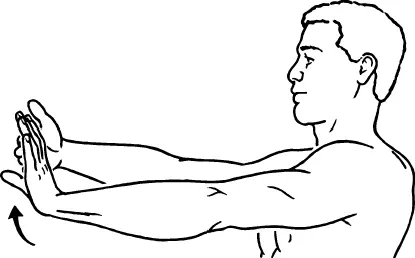
Wrist flexion stretch:
- With your palm down, extend your arm in front of you.
- Using your other hand, slowly bring your fingers down towards yourself until your forearm stretches.
- Repeat a few times, holding for 15 to 30 seconds each time.
Wrist extension stretch:
- Grasp your hand in a fist and straighten your fingers.
- Slowly bring your hand back towards you using your free hand until your forearm stretches.
- Repeat a few times, holding for 15 to 30 seconds each time.
Radial Deviation Stretch:
- Stretch one arm out to the side, palm facing forward.
- Using your other hand, slowly draw your thumb down towards your forearm until you feel a stretch in the outer portion of your wrist.
- Transfer to the opposite side after 15 to 30 seconds of holding.
Ulnar deviation stretch:
- Stretch out one arm to the side, palm down.
- Using your other hand, slowly draw your pinky finger down towards your forearm until you feel a stretch in the inside area of your wrist.
- Transfer to the opposite side after 15 to 30 seconds of holding.
Median nerve glide:
- Make a loose fist and tuck your thumb inside for the median nerve glide.
- With your thumb tucked in, gently bend your wrist back and then straighten your fingers. Your palm should start to glide as a result of this.
- Several times a day, repeat this motion ten to fifteen times.
Strengthening exercises:
- Strengthening your grip: To build stronger hand and forearm muscles, squeeze a soft ball or use a hand gripper. As you gain strength, progressively raise the resistance from light to moderate.
Prevention of Carpal Tunnel Syndrome
Although carpal tunnel syndrome (CTS) can be painful, there are things you can do to avoid getting it in the first place. The following are some important measures for preventing CTS:
- Reduce Repetitive Hand Motions: Take frequent breaks to stretch and rest your hands and wrists if your profession requires you to do repetitive hand motions like typing or using tools. Aim for five to ten-minute breaks every hour.
- Work rotation: To prevent extended periods of repetitive hand use, try to work on different tasks throughout the day.
- Technique: Make sure you’re using the right technique whether utilizing tools or typing. Your wrists may experience less tension as a result.
Keep Your Posture Correct:
- An ergonomic workplace should be set up if you work at a desk. To maintain a neutral wrist posture, you should alter the height of your chair, the location of your keyboard, and the location of your display.
- Good posture: To prevent placing too much strain on your hands and wrists, keep your posture up throughout the day.
Strengthen and Stretch:
- Hand and wrist exercises: To maintain muscle strength and enhance flexibility, which can support your wrists, regularly engage in hand and wrist stretches and strengthening exercises.
- Warm-up and cool-down: Perform some gentle hand and wrist exercises to warm up before beginning any activity that requires repetitive hand motions. Stretching should also be done to decompress following these exercises.
Additional precautions:
- Keep your weight in check: Being overweight raises your chance of developing CTS. Sustaining a healthy weight can aid in lowering the median nerve’s pressure.
- Control underlying medical disorders: If you suffer from diabetes or rheumatoid arthritis, keeping these conditions under control will lower your chance of developing CTS.
- Wrist splinting: If you tend to bend your wrists as you sleep, wearing a wrist splint at night may help prevent symptoms of carpal tunnel syndrome.
By incorporating these precautionary steps into your everyday practice, you can lower your risk of carpal tunnel syndrome considerably.
Summary
The symptoms of CTS, a common illness, can appear gradually at first. Without treatment, CTS can eventually cause severe pain and numbness in the fingers, hand, and arm. Home treatments for mild cases of CTS include applying cold, reducing repetitive motions, and taking over-the-counter painkillers. Surgery or even steroid injections may be necessary for more severe cases of the illness.
Anyone who thinks they might have chronic fatigue syndrome (CTS) should see a physician; prompt diagnosis and appropriate care can help reduce symptoms and prevent consequences.
FAQs
What causes carpal tunnel syndrome in the first place?
Carpal tunnel syndrome occurs by compression of the median nerve. The carpal tunnel is a channel in the wrist that the median nerve uses to get from the forearm to the hand. All of the fingers other than the little finger and the palm side of the thumb are sensed by the median nerve.
What symptoms and signs are present in carpal tunnel syndrome?
Weakness in one or both hands when holding objects, one or both hands may hurt or go numb, the sensation of “pins and needles” in the fingertips, The fingers feel swollen, fingers tingling or burning, particularly in the thumb, index, and middle fingers.
What aggravates carpal tunnel syndrome?
In CTS, repetitive strain is a significant factor. The carpal tunnel can collapse as a result of any activity that frequently subjects your hand and wrist to overextension, vibration, or uncomfortable wrist positions.
Can a carpal tunnel condition heal itself?
Rest allows the tissue to return to normal and reduces inflammation. CTS may be able to recover on its own. The median nerve isn’t fully released because it’s frequently impossible to avoid movements or activities that result in the collapse. If you don’t fully recover, you’ll be open to getting hurt again.
Does carpal tunnel syndrome cause discomfort?
The following symptoms could be present if you have carpal tunnel syndrome: Your thumb and first three fingers are experiencing pain, numbness, tingling, or burning. Your forearm may ache up to your shoulder. sporadic shock-like feelings radiating forth towards your fingers from your forearm.
Why is nighttime carpal tunnel syndrome worse?
Because there is no active muscular pump throughout the night, tissue fluid in the arms redistributes, making Carpal Tunnel Syndrome symptoms worse at night. Put another way, when we try to sleep, we aren’t moving, and more fluid causes an increase in carpal tunnel pressure, which triggers problems.
Which hand position is ideal for carpal tunnel syndrome?
The most protective wrist position is neutral. This is the alignment of your hand with your wrist. With the palm down and fingers bent towards the inner wrist, one is in a flexed position. Placing the palm up indicates an extended position.
References
- Carpal tunnel syndrome symptoms and treatment OrthoInfo AAOS. (n.d.). https://orthoinfo.aaos.org/en/diseases–conditions/carpal-tunnel-syndrome/
- Carpal tunnel syndrome – Symptoms and causes – Mayo Clinic. (2024, February 6). Mayo Clinic. https://www.mayoclinic.org/diseases-conditions/carpal-tunnel-syndrome/symptoms-causes/syc-20355603
- Professional, C. C. M. (n.d.-a). Carpal Tunnel Syndrome. Cleveland Clinic. https://my.clevelandclinic.org/health/diseases/4005-carpal-tunnel-syndrome
- Carpal Tunnel Syndrome. (2003, December 3). WebMD. https://www.webmd.com/pain-management/carpal-tunnel/carpal-tunnel-syndrome
- Carpal tunnel syndrome: MedlinePlus Medical Encyclopedia. (n.d.). https://medlineplus.gov/ency/article/000433.htm
- Schofield, K. (2021, July 2). Exercises for treating Carpal Tunnel. Healthline. https://www.healthline.com/health/carpal-tunnel-wrist-exercises#stretch-armstrong

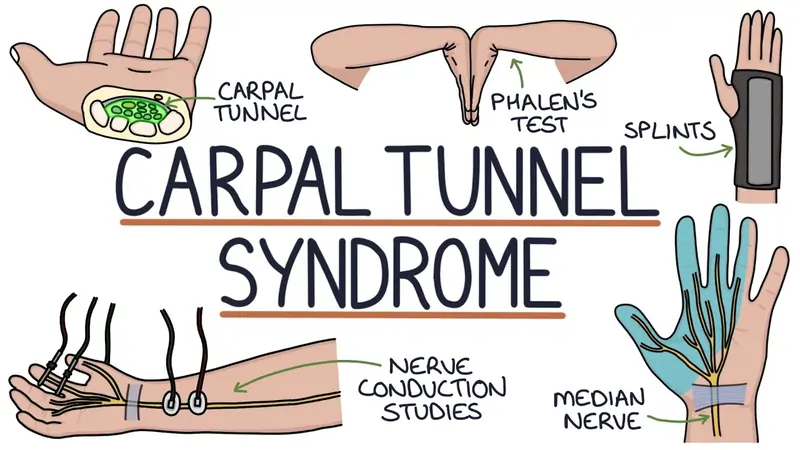
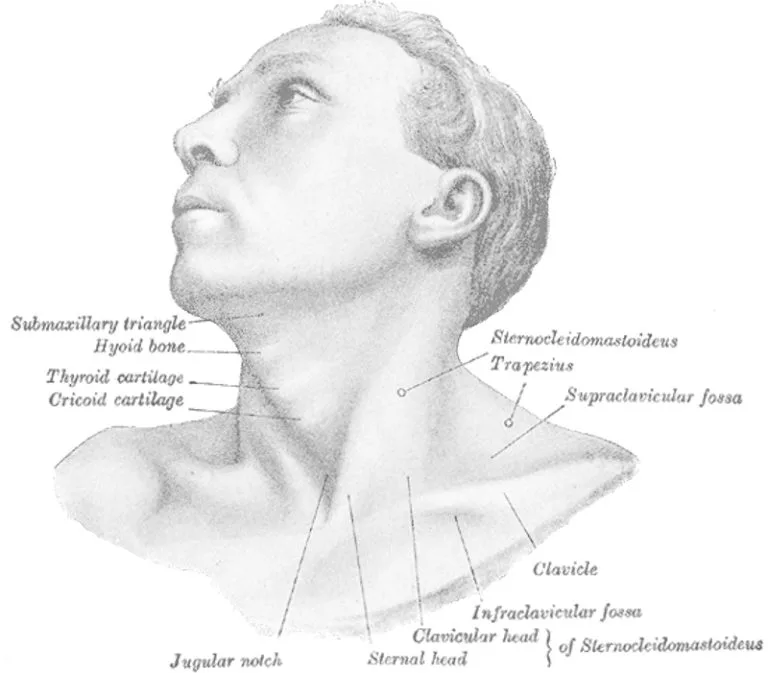



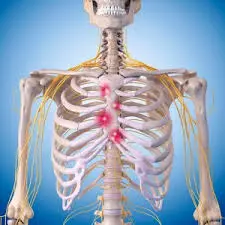
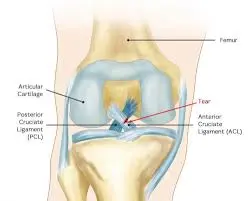
15 Comments